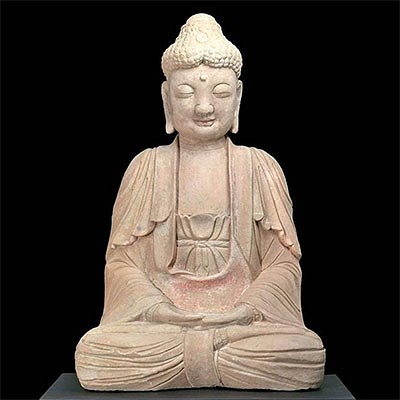18K Gold Necklace Greek Silver Alexander Tetradrachm
Lot 31b
About Seller
Artemis Fine Arts
686 S Taylor Ave, Ste 106
Louisville, CO 80027
United States
Selling antiquities, ancient and ethnographic art online since 1993, Artemis Gallery specializes in Classical Antiquities (Egyptian, Greek, Roman, Near Eastern), Asian, Pre-Columbian, African / Tribal / Oceanographic art. Our extensive inventory includes pottery, stone, metal, wood, glass and textil...Read more
Categories
Estimate:
$6,000 - $8,000
Absentee vs Live bid
Two ways to bid:
- Leave a max absentee bid and the platform will bid on your behalf up to your maximum bid during the live auction.
- Bid live during the auction and your bids will be submitted real-time to the auctioneer.
Bid Increments
| Price | Bid Increment |
|---|---|
| $0 | $25 |
| $300 | $50 |
| $1,000 | $100 |
| $2,000 | $250 |
| $5,000 | $500 |
| $10,000 | $1,000 |
| $20,000 | $2,500 |
| $50,000 | $5,000 |
| $100,000 | $10,000 |
| $200,000 | $20,000 |
About Auction
By Artemis Fine Arts
Feb 18, 2021
Set Reminder
2021-02-18 10:00:00
2021-02-18 10:00:00
America/New_York
Bidsquare
Bidsquare : Exceptional Antiquities, Asian, Ethnographic
https://www.bidsquare.com/auctions/artemis-gallery/exceptional-antiquities-asian-ethnographic-6373
Museum-worthy examples of Egyptian, Greek, Roman, Etruscan, Near Eastern, Far East / Asian, Pre-Columbian, African / Tribal, Oceanic, Native American, Spanish Colonial, Russian, Fossils, Ancient Jewelry, Fine Art, so much more! Artemis Fine Arts info@artemisgallery.com
Museum-worthy examples of Egyptian, Greek, Roman, Etruscan, Near Eastern, Far East / Asian, Pre-Columbian, African / Tribal, Oceanic, Native American, Spanish Colonial, Russian, Fossils, Ancient Jewelry, Fine Art, so much more! Artemis Fine Arts info@artemisgallery.com
- Lot Description
Greece, Hellenistic, ca. 336 to 323 BCE. A gorgeous 18 karat gold necklace chain with an ancient silver Alexander III, or Alexander the Great, tetradrachm on a 14 karat gold pendant. Surrounded by 44 chanel set, baguette cut synthetic spinels of a sapphire hue and a gold filigree, the ancient coin features a youthful profile of the Greek hero Herakles facing right with a large nose, prominent chin, pursed lips, and wearing his famous Nemean lion skin, which, according to mythology, he defeated during the first of his 12 Labors. Weight: 50.5 g. Coin 90% Silver. Chain: 80% gold or 18K. Setting: 60% gold or 14K. Size: pendant 2.125" Diameter (5.4 cm); coin 1.25" Diameter (3.2 cm); chain 19" L (48.3 cm)
The reverse side shows a throned Zeus, the father of Herakles, facing left with a chiseled abdomen, reminiscent of the Belvedere Torso, with a cloth draped over the lower half of his body as his left arm reaches back to hold a sceptre and his right extends to hold an eagle. Pegasus can be seen running at his foot, possibly in the background, while the inscription "Of Alexander" is written vertically in Greek behind Zeus' throne.
These images of Herakles and Zeus were chosen due to Alexander the Great's many links to the ancient hero of Herakles. In addition to often being described as lion-like in many ancient sources, Alexander the Great was part of the Argead dynasty, an ancient Macedonian royal house, who claimed lineage to Herakles and, according to Plutarch, many rumors claimed that Alexander was also a son of Zeus, like Herakles. A stunning piece of jewelry that will undoubtedly elicit praise of both its beauty and rich historical significance. Accompanied by a North American Gemological Laboratory card.
Alexander the Great needs no introduction, and his coinage had subsequent international fame. Although they began to be minted during his lifetime, coins of this style were also issued for two decades after his death by the generals who had divided up his empire, and similar coins were minted by cities for over two centuries to be issued as international coinage. During his lifetime, the production of these coins also speaks to the vast international reach that his empire (and his fame) had: twenty-five mints produced these tetradrachms, of which two were in his home kingdom of Macedonia, one was in his conquered territory of Egypt, and the other twenty-three were in various parts of Alexander-conquered or -influenced Asia. Tetradrachms, specifically, have become especially notorious since the rule of Alexander, as it is believed to be a tetradrachm that was given to Judas for betraying Jesus in the Bible.
Circulated throughout Alexander's territory, versions of these coins can be found in many esteemed institutions. For example, the Metropolitan museum has several, two of which can be found in galleries 158 and 406 (Accession Numbers: 05.44.388 and 1974.10)
Provenance: ex Gig Harbor, Washington USA collection acquired from an old California estate, before 2005
All items legal to buy/sell under U.S. Statute covering cultural patrimony Code 2600, CHAPTER 14, and are guaranteed to be as described or your money back.
A Certificate of Authenticity will accompany all winning bids.
We ship worldwide and handle all shipping in-house for your convenience.
#159647Necklace constructed in modern times with ancient silver coin and modern gold and synthetic spinels. Minor abrasions to coin, with softening to some finer details and edges, otherwise intact and very good. Nice patina to coin and wearable as shown.Condition
- Shipping Info
-
All shipping is handled in-house for your convenience. Your invoice from Artemis Gallery will include shipping calculation instructions. If in doubt, please inquire BEFORE bidding for estimated shipping costs for individual items.
-
- Buyer's Premium



 EUR
EUR CAD
CAD AUD
AUD GBP
GBP MXN
MXN HKD
HKD CNY
CNY MYR
MYR SEK
SEK SGD
SGD CHF
CHF THB
THB
















